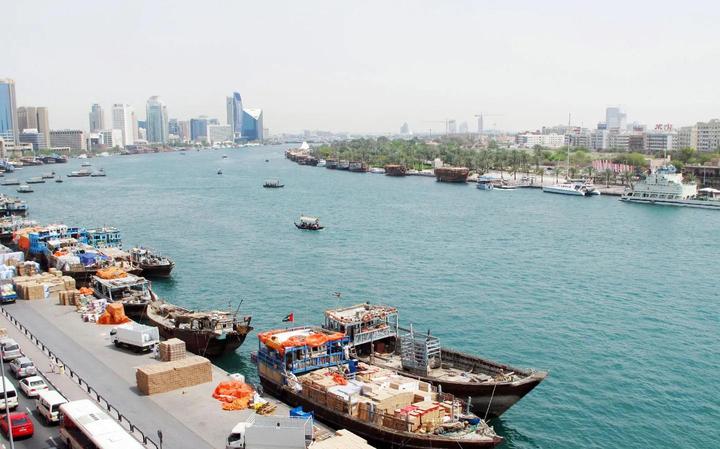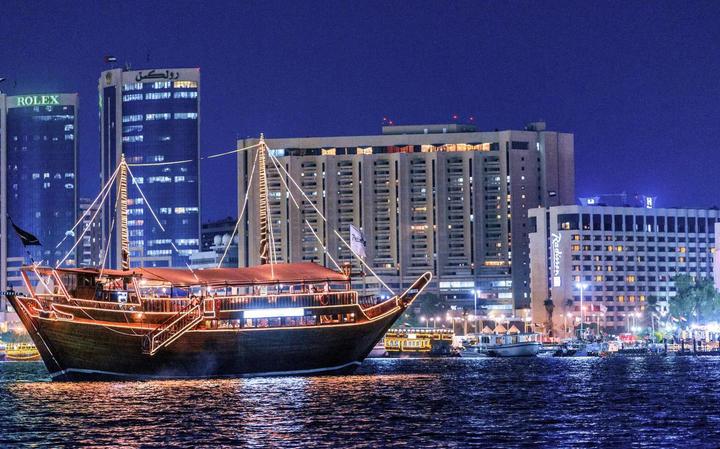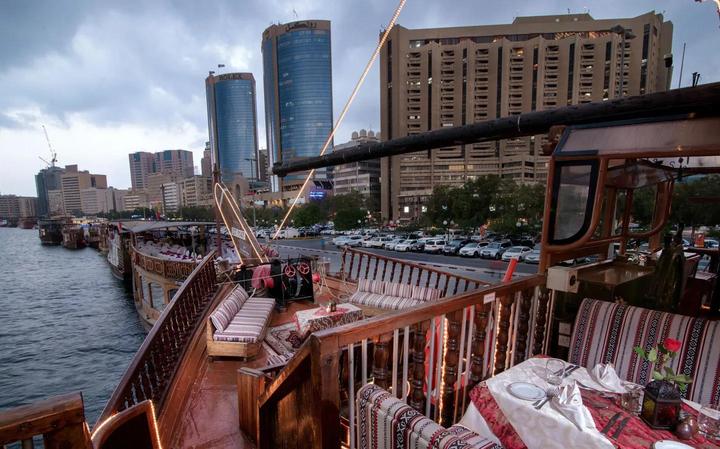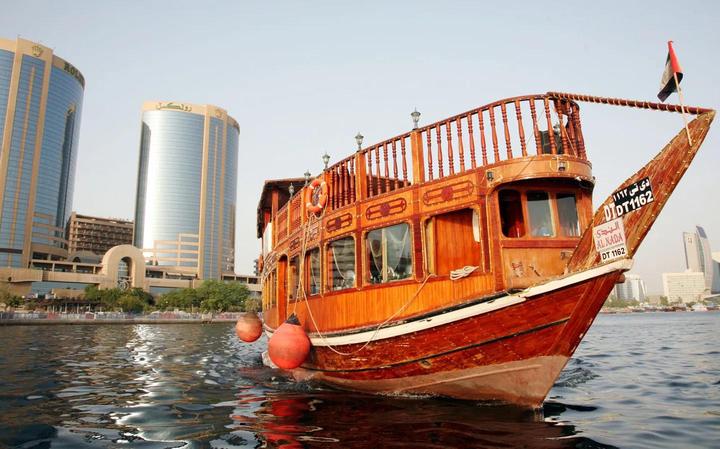A trip back in time to old Dubai

Supercars may be Dubai’s current transport of choice – but a spice-scented dhow trip will take you worlds away from the modern Emirate’s shiny skyscrapers.
It was early evening in Dubai and the sky was streaked rose and peach as the sun dipped towards the horizon. At the edge of the salt-water creek that splits the city in two, the water glowed with reflected light, and the scent of cinnamon, cloves and frankincense drifted across from the spice souk.
I was in Bur Dubai, the emirate’s original trading hub and its commercial heart until little more than 100 years ago. Today, it may not have the flash of new Dubai further inland, but it remains a busy site of Middle Eastern trade, packed with vibrant souks and bustling jetties.
The Arabian Peninsula has a rich maritime history. Wooden boats, or dhows, have been used in the region for centuries, and were key in developing thriving fishing, pearl diving and trade industries. Dhows were a way of life for the coastal tribes of Dubai, who strode the sandy shores long before the five-star beach bars arrived. Today, the Emiratis may deal more in stocks than fish – but this traditional mode of transport still plies a handsome trade on the main waterway of Dubai Creek.
I was after a more authentically Arabian boating experience.
Before me, a busy scene unfolded: docking stations on either side of the creek were lined with huge, multi-coloured cargo dhows, packed with crates bringing merchandise from Iran and beyond. Meanwhile, commuters crossed the waterway on abras: short, nippy wooden dhows with open sides and simple roofs that act as water taxis.
Amid all this action floated the sailing dhows, the glamorous vessels that most people associate with old Arabia. Nowadays, these vessels, with their slender hulls, shallow bodies and soaring masts, are usually motorised and used for tours. But thanks to traditional local craftsmanship, they retain the gravitas and elegance of old, particularly when viewed alongside their humbler cousins: the abra and the cargo dhow.
Although there’s a slew of organised dhow tours available across Dubai – including lunch, dinner, moonlight and sightseeing cruises – I was after a more authentically Arabian boating experience. Just before sunset, I headed to rickety Bur Dubai Abra Station, next to the souks along the creek’s banks, where jewellers, pastry vendors, tailors and spice sellers were gearing up for the hustle and bustle of evening trade – a lucrative period in a country where daytime temperatures can reach 50C. This is the perfect time to make the cross-creek abra journey to the famous gold and spice souks in the Deira neighbourhood on the opposite bank.
At the dockside, a series of wooden ramps led down to floating jetties. The bustling area was filled with passengers pushing their way through the muggy, spice-scented air to secure a seat on the next abra, while men hurried past pushing carts piled with cloth and silks en route to the nearby textile souk.


